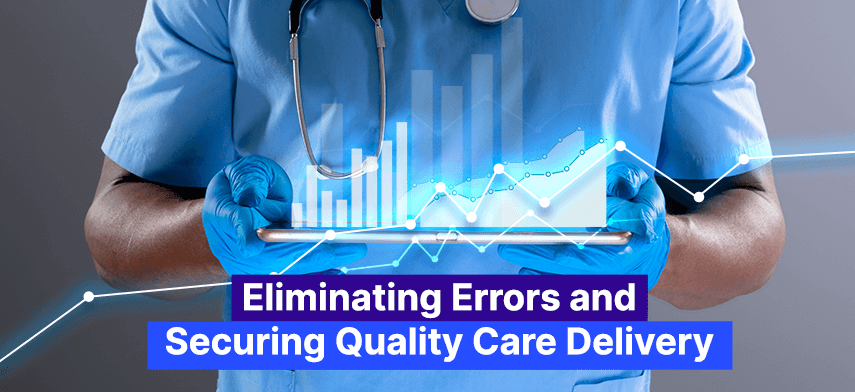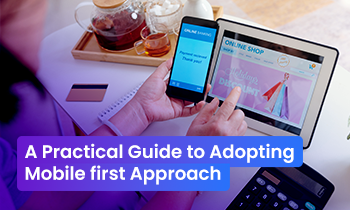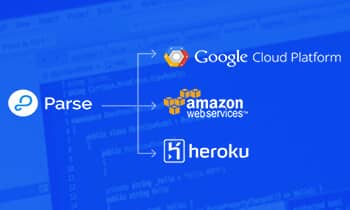As time passes, information technology is steadily advancing into healthcare systems ensuring better healthcare delivery. Previously, there were plenty of testing reports, prescriptions issued from the different hospitals from various doctor visits. Precautions and predictions were wildly inaccurate that lead doctors to an incorrect diagnosis.

With the rise of information technology and artificial intelligence, health industries are equipping themselves with better care delivery. Communication between doctors and other medical facilities is becoming more efficient, and HL7 integration services are considered the backbone in this progress. HL7 data integration enables storing, sharing, and retrieval of electronic health records that support clinical management, delivery, and evaluation of health services.
Determining the Impetus of HL7 Integration Services
HL7 or health level 7 is a health communication protocol that assists in the exchange of data between applications involved in the health care process. The protocol enables service providers to manage information safely, securely, and efficiently ensuring maximum efficiency and accuracy in providing medical services to people. The protocol achieves this by developing integrated management systems.
This protocol was created by Health Level Seven International, a non-profit organization that sets standards for the exchange of electronic health care information. Formats such as EHR or Electronic Health Record are introduced by HL7 to provide safe, reliable, and quality care delivery. The HL7 interface standards also help people create systems that allow interoperability.
Understanding the Significance of Standards in HL7 Compliance Protocol
The quality set by HL7 interface standards forms the fundamental building blocks for product development by establishing consistent protocols universally understood and adopted. This set of rules helps fuel compatibility and interoperability.
Another paramount importance of this EHR standard is that it facilitated product development and speeds time to market.
HL7 integration software provides detailed information that saves time and expenses for health service providers developing products. The service providers are not liable to create that framework from scratch, troubleshoot, or even refine it. They also don’t have to convince other similar institutions to implement it. By becoming HL7 compliant, all service providers join to reveal an ecosystem of like-minded institutions and other organizations.
Health providers also use several HL7 interfaces to perform various messaging tasks. The HL7 interface standards that work together include:
- Import endpoint: This is used by the receiving application to get data.
- Export endpoint: The export endpoint is used by the sending application to deliver data to another provider or application.
- The method: The method interface is used for moving data between two applications.
HL7 Standards Revolutionizing the Health Sector
The evolution of HL7 interface standards trails back from version 2 that was built in the mid-90s. The protocol introduced these formats as the standards for electronic health records including:
- Patient’s medical history
- Immunization dates
- Radiology images
- Allergies, diagnosis
- Medication
- Test results.
The system allows access to evidence-based tools for making decisions about a particular patient’s care and streamlined provider workflow.
Standards are built to help share information with other healthcare providers and organizations such as medical imaging facilities, emergency facilities, laboratories, pharmacies, and specialists. This HL7 data integration allows containing input of all the clinicians involved in the delivery of patient care.
Hl7 Version 2.X (V2)
This is the most popular messaging standard used all over the world so far. It is designed to support patient-centric systems and a more distributed environment. Data is arranged as per the department’s requirements. Over 90% of US healthcare organizations use this standard to exchange health data between health care providers and vendors.
HL7 Version 3
This version has specifications based on HL7s Reference Information Model (RIM). RIM provides a single resource that allows version 3 implementers to work with the complete set of terminologies, data types, and massages needed to build full implementation. This version represents a new approach to the information exchange where information is shared in XML format.
FHIR Protocol
This is a short form of Fast Healthcare Interoperability Resource Specification. It simply combines CDA, HL7 version 3, and HL7version 2.X. With HL7 FHIR integration, R2 and R4 versions are aiming to improve patient data exchange, enhancing quality care delivery to patients. Unlike other standards, this design mainly focuses on the latest web standards, and the solutions are made from a set of modular components called resources. FHIR powered applications are expandable to suit various contexts like cloud communications, EHR-based sharing, mobile apps. The target of this standard is wide-ranging from health and clinical labs, medical imaging service providers, HIS vendors, PHR vendors, and Hospitals.
Challenges with HL7 Integration Services
There is critical variance in how vendors implement HL7 principles. Some of the challenges include:
- It makes interaction more costly and time-consuming slowing down the cycles.
- It also requires significant resources during integration development, meaning that fewer resources are available for other needs such as enhancement to functionality and features.
- Bringing to new EHR may bring result in lost inheritance data.
- Migrating to new EHR poses a significant challenge for healthcare providers in today’s marketplace.
- Some providers are opted to keep up various EHRs, expecting clinicians to log in to multiple systems or even demand paper records.
Benefits of HL7 Integration
Service providers can gain a lot by interacting their systems to HL7 standards. Let’s take a look at the benefits of HL7 integration:
- It provides an approach to fully integrated healthcare applications by defining the underlying data structure for storing and interchanging healthcare data.
- HL7 demonstrates timeliness and professional competence in all of our activities without sacrificing accountability, openness, practicality, or willingness to prioritize stakeholder needs.
- Interoperability standards are provided by HL7.
- It enhances information transfer among all of our stakeholders while improving care quality, reducing uncertainty, and optimizing workflow.
Utilizing APIs for Next-Level HL7 Data Integration Maximizing the Value of EHRs
An extensive private health system with seven hospitals and more than 40,000 staff, doctors, and customers aimed to enhance patient care. To more efficiently drive preventive care, the health system needed to allow physicians and caseworkers to make more informed medical decisions for both points of care and within patients’ populations outside the clinical environment. By reducing the prevalence of chronic disease, the aim was to enhance health outcomes without additional investment in care professionals.
However, to achieve this, clinicians and caseworkers visiting patients needed digital, on-demand access to medical records, and an opportunity to exchange real-time updates for promoting clinical collaboration. To have a holistic 360-degree patient view, they are required to incorporate healthcare integration engine from their EHR systems with non-clinical systems.
To influence patient healthcare outcomes outside of the facility, the health system hoped to exchange patient health information with hundreds of community care agencies. To accomplish this, the health system used 15 FHIR APIs to reveal data from their Epic EHR instances, giving clinicians a holistic understanding of the patient experience for improving care planning strategies. Thus, maximizing the value of EHRs and utilizing the APIs to create next-level HL7 integration software.
The Necessity to Hire HL7 Integrators
1 Increase the viability of existing applications
Clinicians are stressed due to the maintenance of excess records and data entering in a limited amount of time. As a result, they can rarely exit their EHR platform and re-enter the same information into another program. Hence, for EHRs to be viable and achieve the necessary cost savings. With HL7 integrators, it can be easily integrated with other software like laboratory information systems, radiology information systems, practice management software, and billing software.
2 Develop a robust interface engine
Because of the wide range of HL7 implementations among vendors, integration is typically costly and time-consuming. HL7 integrators require a substantial investment of time and money from the provider’s perspective. Adding new interfaces or updating existing apps may also affect the overall functionality and interoperability of the organization’s apps. HL7 integrators enables a space to develop a robust healthcare integration engine.

Wrapping Up,
HL7 data integration has been of great importance in the health industry. The work of pis simplified significantly, leaving doctors to concentrate on the vital work. HL7 data integration is enabling the creation of better tools that can transfer critical information seamlessly and efficiently. Therefore, enhancing effective patient care through quality care delivery service. Mobisoft Infotech’s digital prowess assisted the Seremedi team with an HL7 integrated platform. Thus, creating a robust platform efficiently connects patients with their care teams.

Author's Bio

Shailendra Sinhasane (Shail) is the co-founder and CEO of Mobisoft Infotech. He has been focused on cloud solutions, mobile strategy, cross-platform development, IoT innovations and advising healthcare startups in building scalable products.


